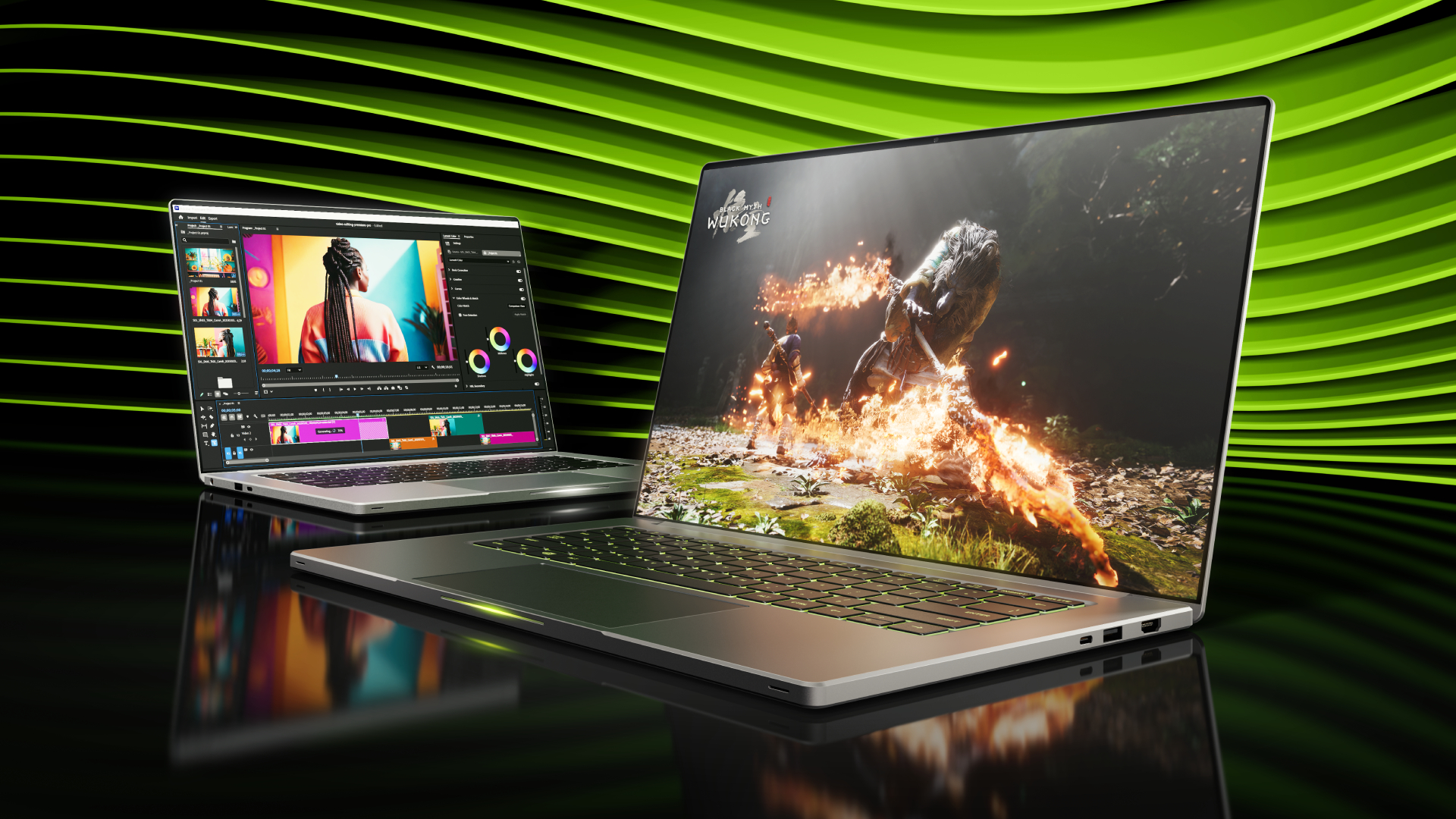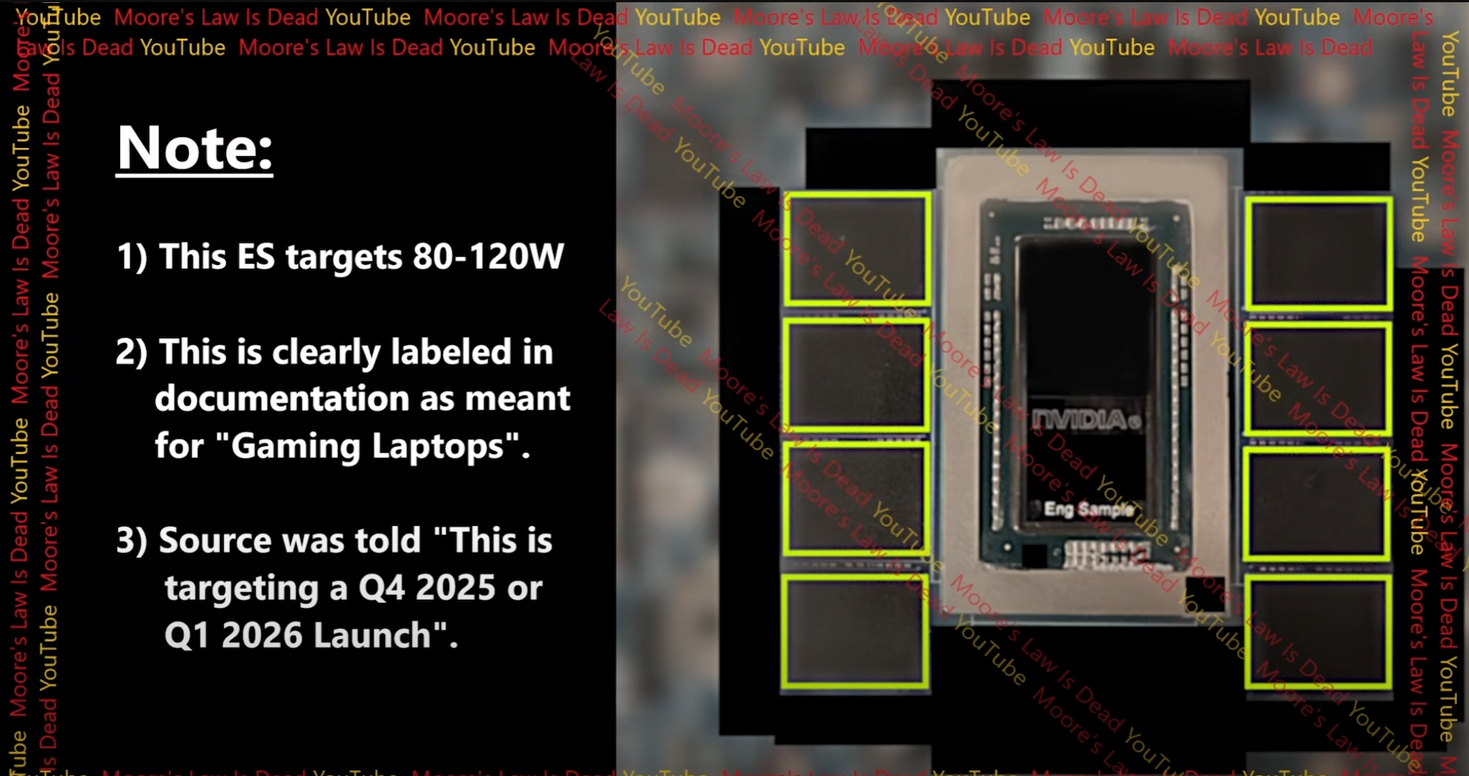Nvidia’s 120W APU leak could mark the beginning of the end for laptop GPUs
Thinner, cooler, faster—Nvidia’s next-gen chip could flip the laptop market on its head.

A new, credible leak suggests Nvidia is cooking up something that could transform gaming laptops as we know them: A 120W Arm-based APU that combines CPU, GPU, and NPU into a single chip.
If early reports are accurate, this could deliver RTX 4070–level performance in a slimmer, cooler, and more efficient package and see Nvidia take pole position in laptop chip primacy.
Let’s be clear—this wouldn’t just be another performance play that we frequently see with new hardware iterations, but a potential design revolution that could change everything. Or nothing.
All eyes on Arm
The leak, first reported by YouTube channel Moore’s Law Is Dead and later verified by Notebookcheck, shows an engineering sample of the chip surrounded by eight LPDDR5X memory modules. The chip integrates a custom Arm CPU and a next-gen Nvidia GPU on the same die, likely codenamed Blackwell. There’s also a powerful NPU onboard, positioned to handle heavy AI workloads.
What’s particularly impressive is that this unified chip reportedly runs at a 120W TDP and still manages to compete with the RTX 4070 Laptop GPU in benchmarks.
Sources claim Nvidia is internally comparing its new APU to a 65W-tuned 4070, suggesting near parity in gaming performance with far better power efficiency.
According to Moore’s Law Is Dead, the chip is scheduled to hit the market between Q4 2025 and early 2026, and Nvidia is reportedly working with Dell to bring this architecture to life in future Alienware laptops.
Sign up to receive The Snapshot, a free special dispatch from Laptop Mag, in your inbox.

The death of discrete?
If Nvidia’s APU lives up to its potential, the entire idea of separating CPU and GPU in a gaming laptop could become obsolete.
Combining the two allows for tighter integration, lower latency, and shared access to high-bandwidth memory. Thermal design also benefits since there’s only one hot zone to manage instead of two.
This could mean fewer fans, thinner chassis, and better battery life, all without sacrificing AAA gaming performance. Those in the know will recognize this as a similar design philosophy to Apple’s M-series chips, but unlike Snapdragon or Apple silicon, this chip might bring actual desktop-class frame rates to the table.
Nvidia’s closest competitor here is AMD, which is preparing its own monster chip: The Strix Halo APU.
AMD's APU is expected to pair up to 16 Zen 5 cores with 40 RDNA 3.5 GPU compute units, pushing as much as 120W as well. In theory, it should be a beast.
But Nvidia may have a leg up with its more efficient GPU architecture and early adoption of on-package memory. Notebookcheck notes that Nvidia’s sample includes LPDDR5X soldered around the die, enabling high memory bandwidth without a separate graphics memory pool.
That unified design is a big win for energy efficiency, which matters more than ever as gaming laptops strive to balance power and portability.

What could this mean for laptop design?
A 120W chip still requires serious cooling, so we’re not talking about fanless devices. But without the need for a separate GPU and VRAM modules, OEMs have a chance to rethink their internals. One configuration might resemble a MacBook Pro in weight but pack gaming performance that rivals today’s bulkier rigs.
Keep in mind that we’re just speculating and thinking about what could eventually be. It would be surprising to see a dedicated Nvidia gaming laptop SoC right out of the gate, but the rumored APU could well be a starting point. That said, anything can happen, and the quoted sources do directly reference the APU as being earmarked for gaming laptops.
The most likely initial application for the APU is AI. With the likes of upscaling, frame generation, real-time voice effects, and creative tools becoming more common, a strong on-chip AI engine could be the killer feature that separates Nvidia’s solution from AMD and any future moves by Intel (though Intel is conspicuously absent from the APU race at the moment, with nothing in its roadmap suggesting a full-on AI or gaming APU.)
With sources claiming that the chip includes an NPU powerful enough to run modern generative models and assist with GPU-accelerated workloads without the cloud, it’s hard to think of any applications where it wouldn’t shine, gaming or otherwise.
For Dell and other partners, this is essentially an invitation to innovate, perhaps eventually leading to the first wave of “all-Nvidia” laptops, with unified software and hardware tuned for peak efficiency.
More from Laptop Mag
- AMD Strix Halo APU could make low-end discrete GPUs obsolete — Nvidia's RTX 4060 is on notice
- Nvidia's affordable RTX 5060 is coming soon, but that's not the GPU I have my eyes on
- Dell's new laptop ditches the GPU for a discrete NPU — here's why that's a big deal

Luke is a freelance writer and journalist. Although his background is in legal, he has a personal interest in all things tech, especially hardware and microelectronics, and anything regulatory. Aside from Laptop, he contributes to publications including All About Circuits and EE Power.
You must confirm your public display name before commenting
Please logout and then login again, you will then be prompted to enter your display name.
